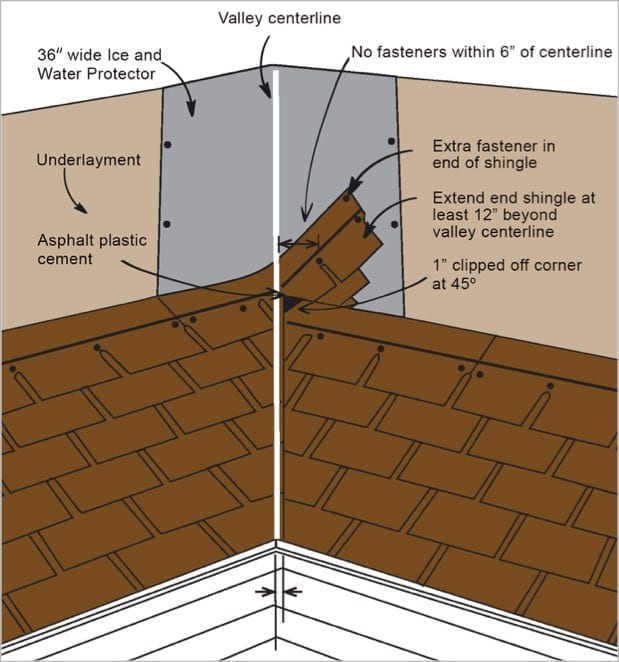How to Install Roof Shingles
by siteadmin

It is a big project to install roofing shingles, but with the right safety precautions and tools any do-it yourselfer can complete it. It is much easier to install shingles correctly when you use the right technique. This will also prevent problems such as leaks and blow-offs.
Follow the manufacturer's instructions regarding exposure, offset (the distance between the shingles in successive layers) and nailing. The roof will be stronger and more resistant to wind damage if you follow the manufacturer's instructions.
How to Lay out the Felt Sheet
The roof deck is protected by a roll of roofing felt that weighs 15 or 30 pounds. The felt also acts as a vapor-barrier and helps to shed any water that gets past the shingles. The felt is not a solution that will last forever. It should be changed at least once every five years.
Begin with a corner and secure the felt in place. Roll out the felt about 10 feet each time. Secure it with nails or staples with washer heads. Fasteners should be placed every 4-8 inch.
As you work, ensure that the felt is flat and smooth. If the felt is rough, it could trap moisture and lead to problems in the future. Cut the felt around the metal flashing on the vents, pipes and other edges as you reach the eaves. Continue to roll new rows of felt, overlapping them by approximately three inches each time.
Start your training with the starter course
The starter course is the first row of shingles and includes the tabs which form the adhesive strip. Install metal flashing to cover any roof protrusions, like a skylight or chimney. Check to see if you have any flashing on your roof. It should be in good shape and not showing signs of corrosion.
Work your way from the roof ridge to the eaves. Stagger the rows of shingles if necessary according to the manufacturer’s specifications.
Install the final shingle on the roof ridge when you reach the end. The shingle should be centered and bent over the roof ridge. Nail it into place. This shingle helps prevent water seeping into your roof at the peak. Install the ridge vent if necessary to complete the project.
Stagger the Shingles
Each method has its advantages and disadvantages. The stagger method, also known as vertical racking or stagger, is usually faster than the other methods.
This method involves snapping a chalkline for the first course and aligning it with the slit of the previous shingle. The next shingle should be 6" offset from the bottom of the previous shingles. Nail it in place. Continue this pattern until you reach your ridge.
If you are working around an obstruction such as a vent, be sure to cover exposed nail heads using roofing cement. You can also choose to place a WSU strip over the obstruction. This will offer extra protection from leaks. To get the best result, follow the instructions for installation on the shingles. This step is essential for a roof that will last.
Install the rest of the Shingles
After you have removed all of the old shingles, and taken the safety precautions necessary to work on a roof it is time to install the new roofing. You'll need to decide whether to hand-nail or use a nailgun to attach each shingle. The condition of the sheathing underneath the shingles, and your level of comfort with working at heights will determine whether you use a nail gun or hand-nail each shingle.
It's best to read the instructions that come with the shingles to find out how many nails to use per shingle. If you use too few nails, the shingles could blow off during high winds.
Once you reach the ridge, place single tab shingles or special ridge tiles over the ridge. Nail them into place. Install a flashing to cover the vent opening. Glue it in place with plastic roof cement. It is crucial to avoid water intrusion and ice dams. A ridge vent system can be combined with an ice-water membrane to further protect against moisture.
Fort Smallwood Road Unit 2, Baltimore, MD
It is a big project to install roofing shingles, but with the right safety precautions and tools any do-it yourselfer can complete it. It is much easier to install shingles correctly when you use the right technique. This will also prevent problems such as leaks and blow-offs. Follow the manufacturer's instructions regarding exposure, offset (the…
Recent Posts
- Roofing Company Savannah Sheds Light on the Lifespan of Roofs: How Long Should a Roof Last?
- New Orleans Concreters Advocates for Stamped Concrete Driveways as the Ultimate Choice for Durability and Style
- Gutter Installation Jacksonville FL: Revolutionizing Home Protection
- A. Parker Contracting Emerges as Premier Roofer in Delaware: Serving Newark and Wilmington Areas with Excellence
- Understanding Canine Aggression: Insights and Remedies
